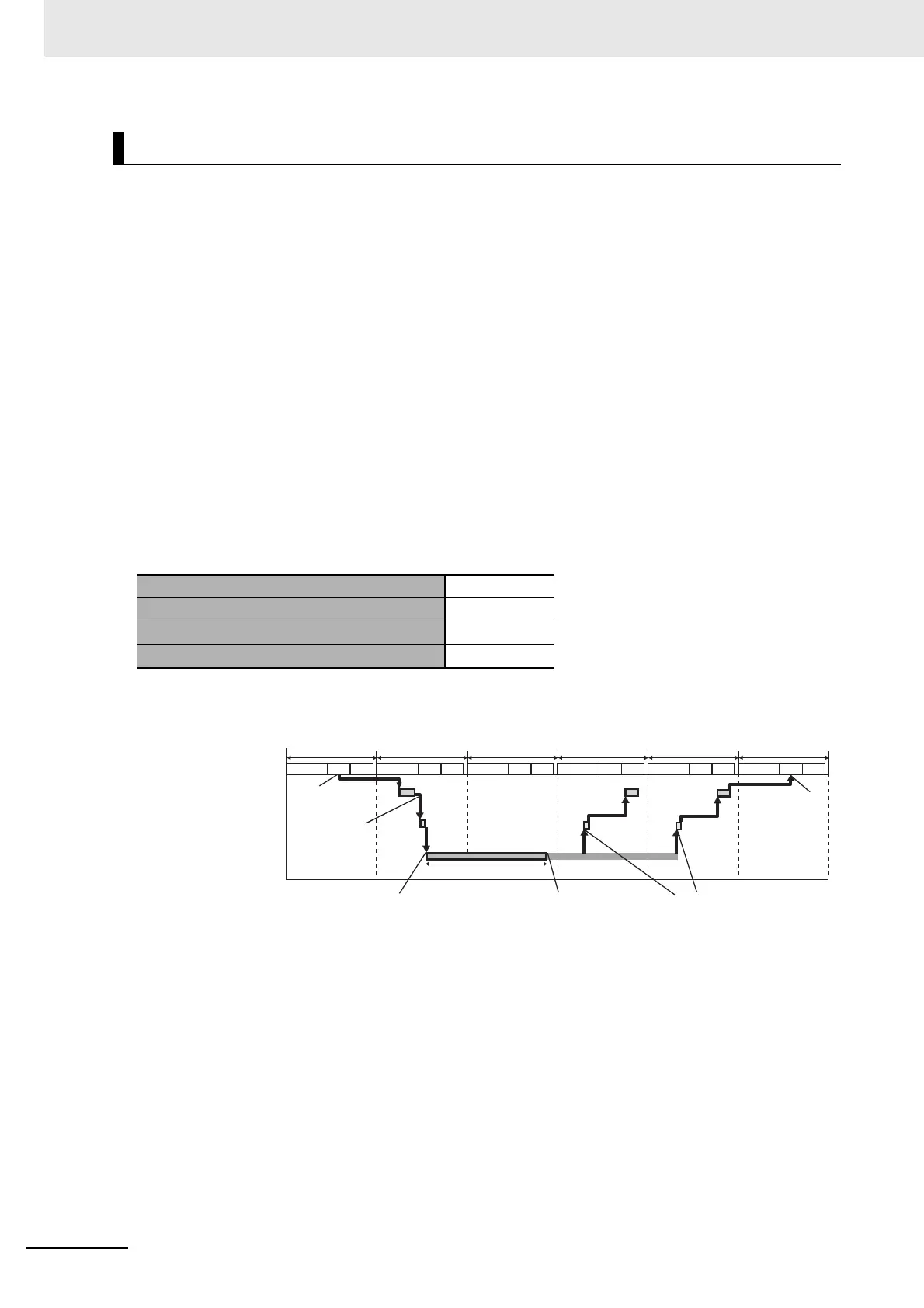6 Process Data Communications and SDO Communications
6-26
NJ/NX-series CPU Unit Built-in EtherCAT Port User’s Manual (W505)
The calculation formula for the minimum message response time is given below.
*1 The slave SDO processing time depends on the slaves. Refer to the manual for the slave.
*2 Round up the calculation result in parentheses to make an integer.
The following timing chart shows an example of the timing from an execution of the SDO communica-
tions instruction to the completion of the instruction execution, based on the performance model below.
Here, it is assumed that the program that executes the SDO communications instructions is assigned to
the primary periodic task.
Performance Model Example
NJ-series CPU Units
Minimum message response time (ms) = Task period of the task that executes SDO communications
instruction
+ (Slave SDO processing time
*1
/Task period of primary periodic
task)
*2
× Task period of primary periodic task
+ (SDO response data size/256 bytes)
*2
× Task period of primary
periodic task
Task period of primary periodic task [ms]
1
SDO response data size [byte]
512
Slave SDO processing time [ms]
1.2
Message response time [ms]
5
IO UPG MC
Task period
(1 ms)
Task period
(1 ms)
Task period
(1 ms)
Task period
(1 ms)
Task period
(1 ms)
Task period
(1 ms)
SDO
communications
instruction
executed.
Execution of SDO
communications
instruction
completed.
Slave SDO processing time
IO UPG MC IO UPG MC IO UPG MC IO UPG MC IO UPG MC
Frame
sent.
SDO
request
received.
SDO response
generation
completed.
EtherCAT master captures
SDO response data from slave:
256 bytes per frame.
IO: I/O refreshing
UPG: User program execution
MC: Motion control
EtherCAT master processing
Slave SDO processing
Line delay

